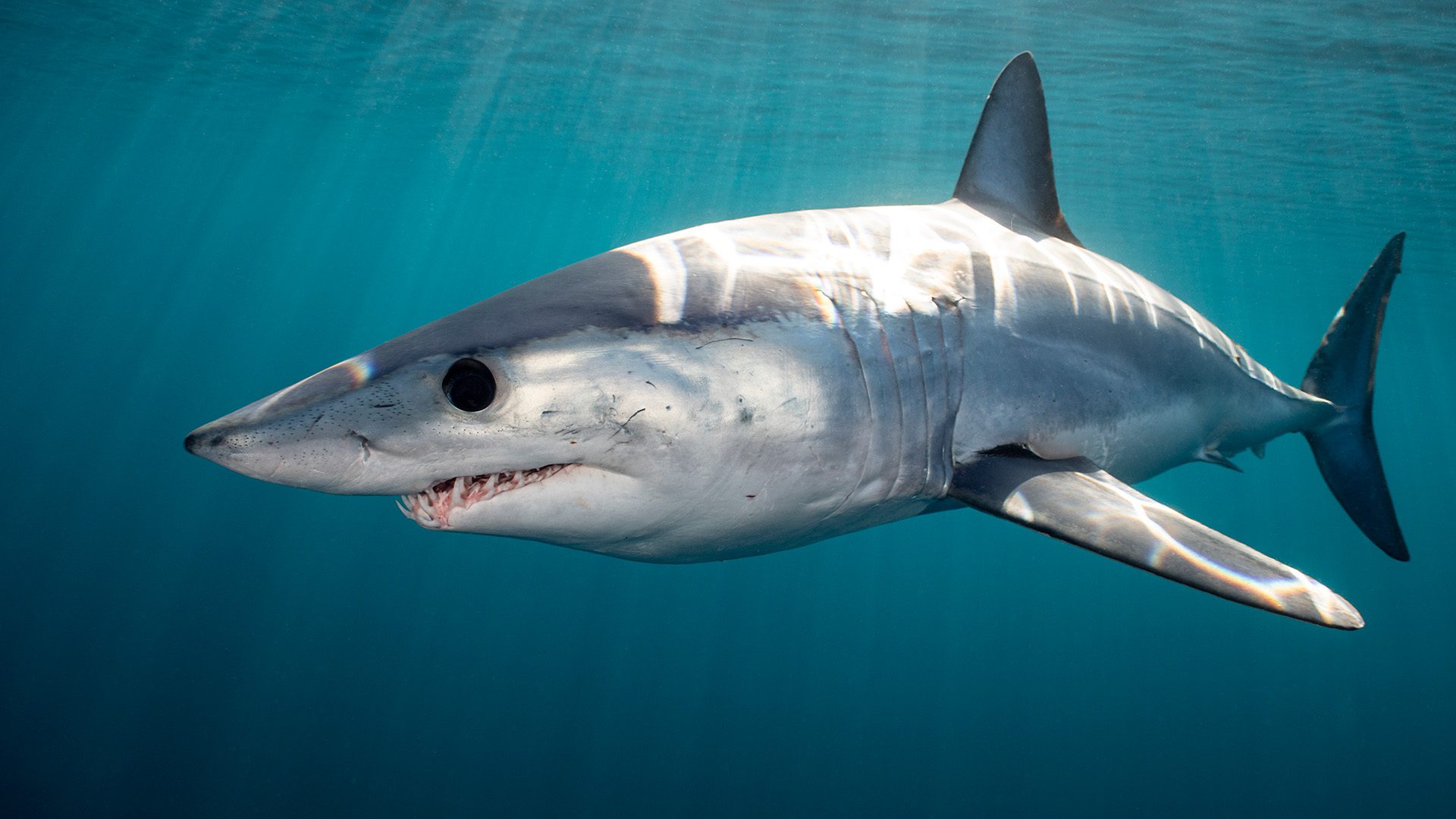Estimated reading time: 5 minutes

This year marks the 50th anniversary of the movie Jaws. The iconic posters show a white shark’s gaping maw as it closes in on its human prey. But the movie’s tale of an aggressive human-eating shark doesn’t reflect reality. And recent perceptions that real-life shark attacks are on the rise similarly don’t match up to actual events.
Unlike the toothy star of Jaws, sharks typically try to avoid people, says Camrin Braun, a marine ecologist and shark expert at Woods Hole Oceanographic Institution. We’re not their prey. Sharks primarily eat fish, including other sharks. Shark pups learning to hunt also munch on invertebrates; large sharks occasionally hunt seals and sea lions. So, when a shark bites a human, “it's almost always a case of mistaken identity,” Braun says. “They want to do everything they can to avoid people.”
So why the sense that shark attacks are on the rise? That likely stems from sensational media coverage when someone is bitten. Everyone has a phone, ready to record at a moment’s notice, so when a shark bite happens, onlookers record the event and share it widely. Photos and video that trigger a fear response frequently go viral on social media, leading to a sense that these events happen more often than they actually do.
The reality is that sharks are no more aggressive toward people than they’ve ever been, and the chances of being bitten are incredibly small: one in 4.3 million. “You're way more likely to get in a car accident on your way to the beach than you are to have an interaction with a shark at the beach,” Braun says.
Those incredibly low odds persist, despite an increase in the potential for shark encounters. More than 29% of the U.S. population now lives in a coastal county, which corresponds to a steady increase in the number of beach visits over the past few decades.
When shark encounters do occur, they’re usually with small, juvenile sharks that stick close to shore where they’re safe from predators. These inexperienced young sharks spend their time learning how to hunt. “They may be a little more prone to biting at things in that murky water,” Braun says. When people are splashing and playing, in-water visibility drops, which can lead to unprovoked shark bites.
Even with an increase in the potential for shark encounters, the number of bites has been steadily dropping over the last decade. Part of that may be due to greater awareness of sharks and better education on how to avoid being bitten. To be shark-smart at the beach, leave shiny jewelry and shimmery bathing suits at home. Flashy, reflective items can imitate a fish’s scales, which sharks can mistake for prey. Excessive splashing also draws their attention. Staying in water that’s no more than waist deep offers protection against larger sharks that typically won’t venture too close to shore. And since sharks tend to hunt at sunrise and sunset, stay out of the water at those times.
Most importantly, when you enter the water remember that you’re intruding into their world. “It's their habitat,” Braun says. “They're kind of like our neighbors. And we just have to figure out how to coexist and sort of share these places” in a way that keeps everyone safe—sharks and people alike.
This year marks the 50th anniversary of the movie Jaws. The iconic posters show a white shark’s gaping maw as it closes in on its human prey. But the movie’s tale of an aggressive human-eating shark doesn’t reflect reality. And recent perceptions that real-life shark attacks are on the rise similarly don’t match up to actual events.
Unlike the toothy star of Jaws, sharks typically try to avoid people, says Camrin Braun, a marine ecologist and shark expert at Woods Hole Oceanographic Institution. We’re not their prey. Sharks primarily eat fish, including other sharks. Shark pups learning to hunt also munch on invertebrates; large sharks occasionally hunt seals and sea lions. So, when a shark bites a human, “it's almost always a case of mistaken identity,” Braun says. “They want to do everything they can to avoid people.”
So why the sense that shark attacks are on the rise? That likely stems from sensational media coverage when someone is bitten. Everyone has a phone, ready to record at a moment’s notice, so when a shark bite happens, onlookers record the event and share it widely. Photos and video that trigger a fear response frequently go viral on social media, leading to a sense that these events happen more often than they actually do.
The reality is that sharks are no more aggressive toward people than they’ve ever been, and the chances of being bitten are incredibly small: one in 4.3 million. “You're way more likely to get in a car accident on your way to the beach than you are to have an interaction with a shark at the beach,” Braun says.
Those incredibly low odds persist, despite an increase in the potential for shark encounters. More than 29% of the U.S. population now lives in a coastal county, which corresponds to a steady increase in the number of beach visits over the past few decades.
When shark encounters do occur, they’re usually with small, juvenile sharks that stick close to shore where they’re safe from predators. These inexperienced young sharks spend their time learning how to hunt. “They may be a little more prone to biting at things in that murky water,” Braun says. When people are splashing and playing, in-water visibility drops, which can lead to unprovoked shark bites.
Even with an increase in the potential for shark encounters, the number of bites has been steadily dropping over the last decade. Part of that may be due to greater awareness of sharks and better education on how to avoid being bitten. To be shark-smart at the beach, leave shiny jewelry and shimmery bathing suits at home. Flashy, reflective items can imitate a fish’s scales, which sharks can mistake for prey. Excessive splashing also draws their attention. Staying in water that’s no more than waist deep offers protection against larger sharks that typically won’t venture too close to shore. And since sharks tend to hunt at sunrise and sunset, stay out of the water at those times.
Most importantly, when you enter the water remember that you’re intruding into their world. “It's their habitat,” Braun says. “They're kind of like our neighbors. And we just have to figure out how to coexist and sort of share these places” in a way that keeps everyone safe—sharks and people alike.
Braun, Camrin. Personal communication.
Cohen, D. About 60.2M live in areas most vulnerable to hurricanes. Census.gov. July 15, 2019. https://www.census.gov/library/stories/2019/07/millions-of-americans-live-coastline-regions.html
International Shark Attack File. Annual Risk of Death During One’s Lifetime. https://www.floridamuseum.ufl.edu/shark-attacks/odds/compare-risk/death/
International Shark Attack File. Beach Attendance. https://www.floridamuseum.ufl.edu/shark-attacks/trends/beach-attendance/
Pinson, Jerald. Unprovoked shark bites plummeted in 2024. International Shark Attack File. February 11, 2025. https://www.floridamuseum.ufl.edu/science/unprovoked-shark-bites-plummeted-in-2024/



